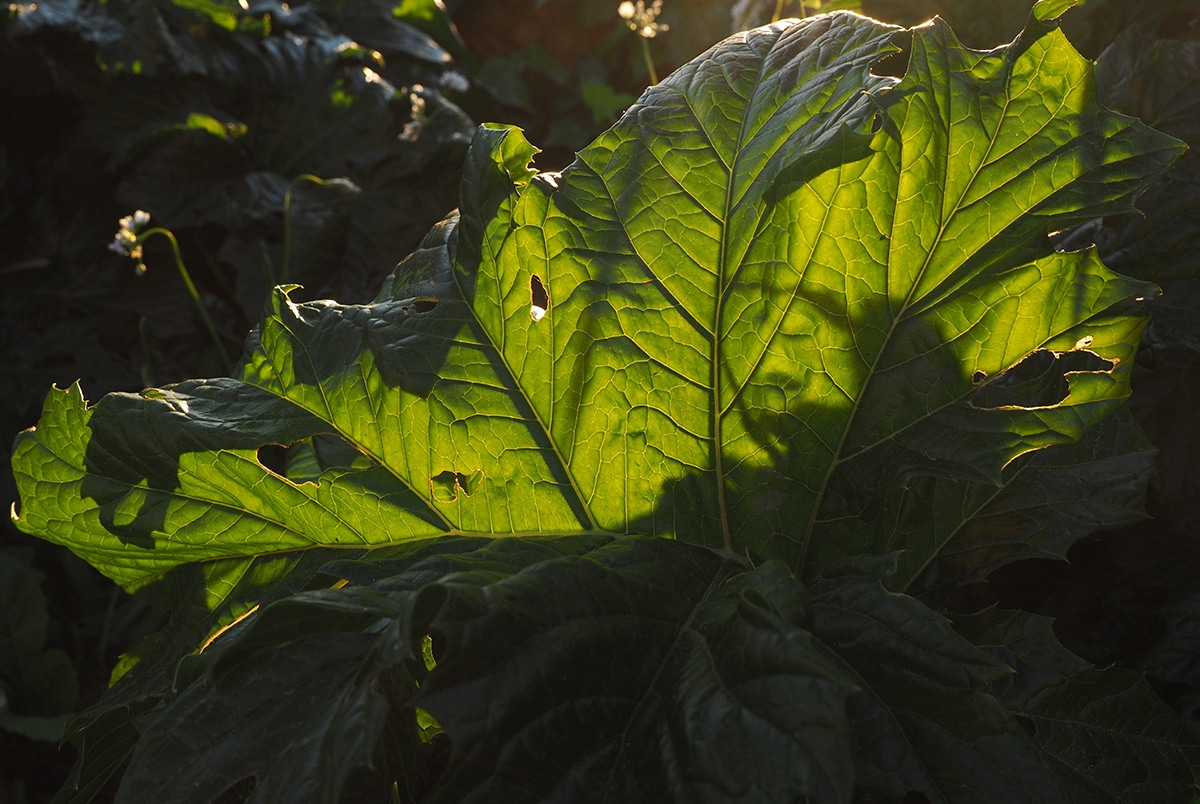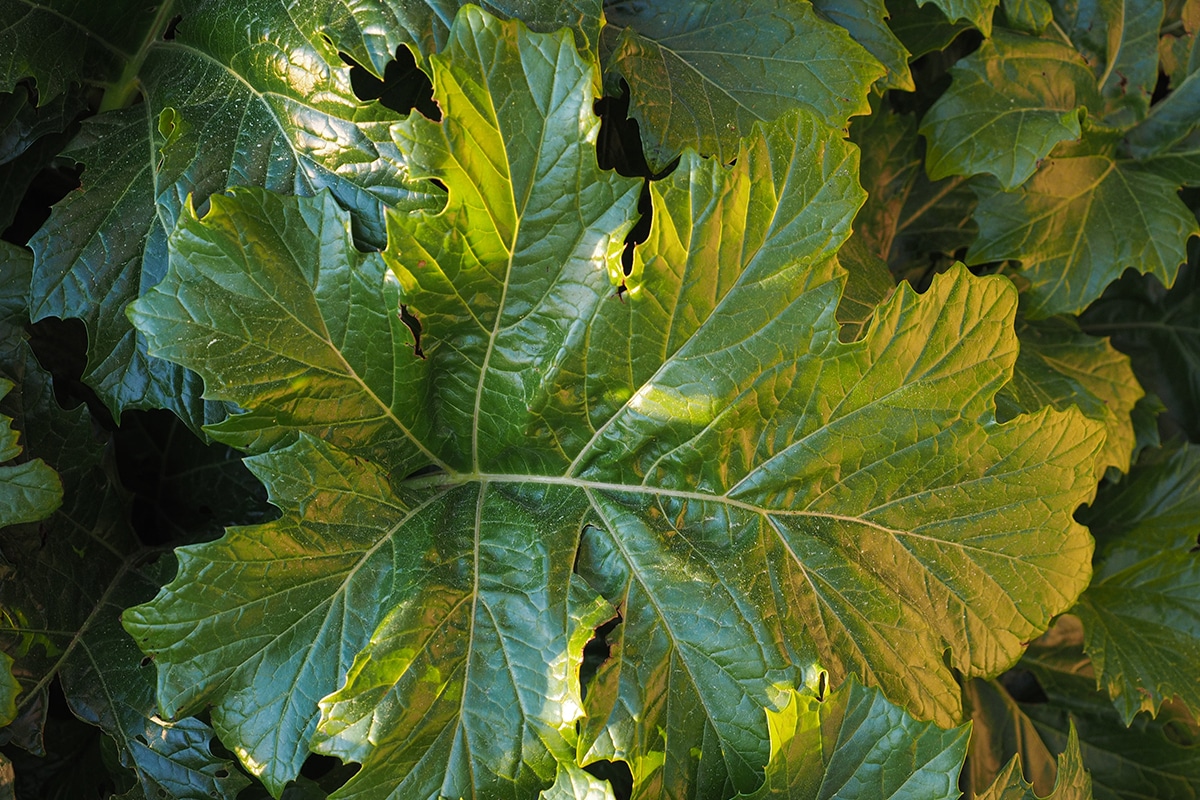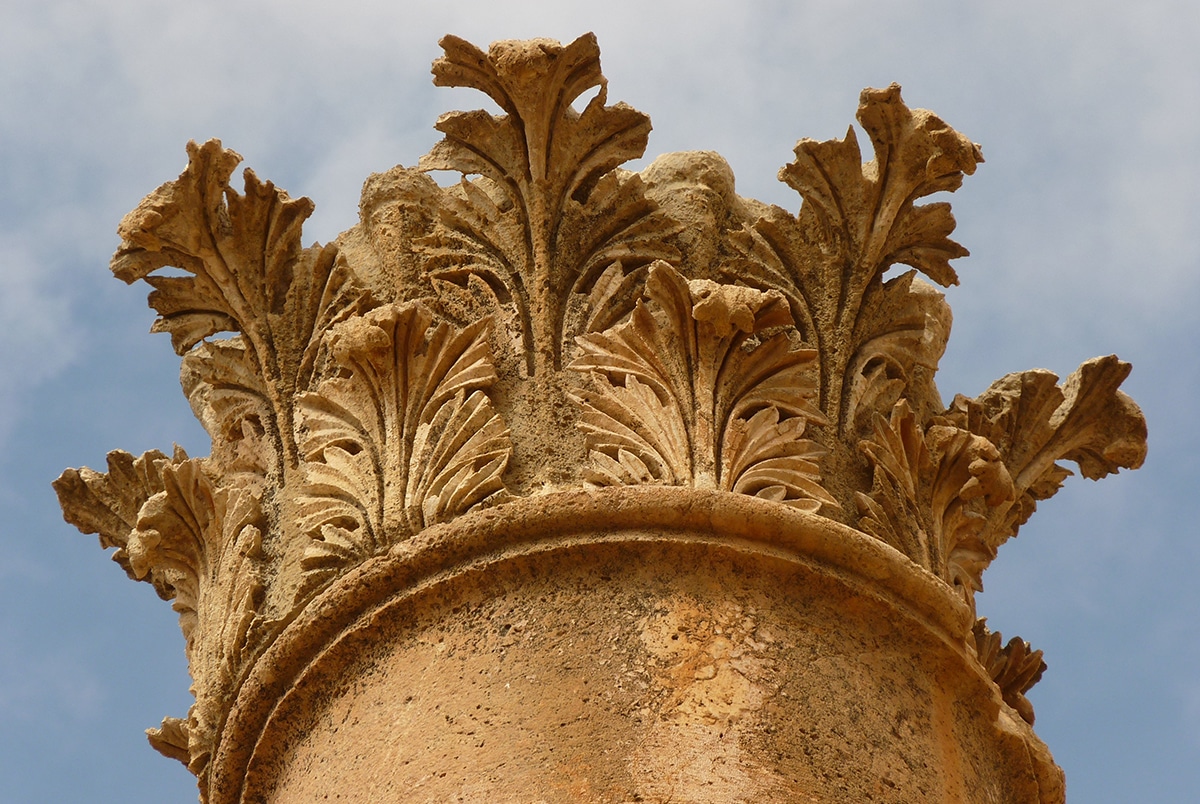
Perhaps you have never heard of acanthus, but surely you have seen it on more than one occasion, even if it is not in its vegetable form. It may also be that you know it under another name, such as nazareno, carnerona or giant grass. It is a frequent plant in gardens, parks and greenhouses, although perhaps the acanthus leaf is familiar to you in another field, such as architecture.
This element belonging to the plant in question has been used a lot in the past to create columns, filigrees and other decorative components. If you want to know more about the acanthus leaf, I recommend that you keep reading. In this article we will explain what it is and discuss its importance in architecture.
What is acanthus leaf?

When we talk about acanthus: acanthus mollis, we refer to a perennial plant native to Asia Less and West Africa that is part of the Acanthaceae family. Despite having beautiful white to purple flowers, its main characteristic is its leaves. These resemble those of the thistle and have a very intense green color. The basals are twenty to one hundred centimeters wide and two to thirty centimeters long. They are usually elliptical or ovate in shape. In contrast, the upper leaves are considerably smaller, reaching between one and four centimeters wide and between one and two and a half centimeters long. In addition, they are spiny at the apex.
According to a very old legend, Callimachus, who was a Greek goldsmith, painter and sculptor, saw a specimen of acanthus curled up in the tomb of a maiden. That image inspired him to create an ornamentation that became very popular, belonging to the Corinthian capitals. Later we will discuss what the acanthus leaf has to do with architecture.
What kind of plant is the acanthus?
It's all very well that we know what an acanthus leaf is, but what kind of plant is it really? Let's see: This vegetable is cultivated almost everywhere in the world, using it mainly for decoration. Besides, possesses certain medicinal and therapeutic qualities thanks to various active components that it has, such as mineral salts, tannins, mucilage and others. The properties attributed to this precious plant are astringent, expectorant, antidiarrheal, analgesic (although quite mild in effect) and emollient.
When the acanthus leaf is taken orally, it has a laxative and stimulating effect, helping to open the aptitus. At a topical level, since it has anti-inflammatory properties, it is often used as a poultice, applying it to inflamed areas. The juice of this vegetable is also used for medicinal purposes, as it relieves insect bites and burns. In addition, it helps treat bruises caused by minor blows, falls or impacts, and fights herpes. As they say, acanthus is capable of accelerating the healing process of wounds and reducing skin irritation.
In folk medicine, the mucilaginous roots of this vegetable are used to combat diarrhea. Formerly, This plant was highly recommended to relieve nasal congestion and clear the airways. Therefore, it was widely used to treat pharyngitis, bronchitis, colds, and other respiratory diseases.
What is acanthus in architecture?

Since classical Greece, the acanthus leaf is a decorative element that has endured throughout history, going through different styles. It was in the XNUMXth century BC when Callimachus introduced this ornament, altering the volutes of the capitals belonging to the Ionic style of the Greek architectural orders, passing to the Corinthian style. We can appreciate the importance of this new element especially in the columns. In addition, the acanthus leaf gave rise to the so-called "palmette", which is basically an ornament similar to a palm leaf, but stylized. The scheme is the same as that of the acanthus leaves, but it is usually more symmetrical and static.
The acanthus leaf according to different styles
Throughout history, the acanthus leaf has acquired various aspects, some more realistic than others. Everything depended on the concept that was held during the period in question, varying the border and the treatment of the form, thus facilitating the distinction of the styles of the last centuries. Let's see how it has evolved since ancient times through the various styles:
- Greek: In Classical Greece, acanthus leaves, usually rolled up, were a symbol representing eternal life. They were used to decorate structures and sculptures with a very elegant touch.
- Roman: The Romans used more rounded shapes. In addition, they made the leaves larger and widened the curves to give it more movement. In this way they wanted to add to the idea of plant life also some energy and vitality.
- Byzantine: Before entering medieval times, this decorative element became less delicate and more rigid.
- Medieval art: In the Middle Ages, the acanthus leaf began to decorate paper in the form of engravings, decorating above all the capital letters and the margins of the texts. Regarding the appearance, it begins to be less elegant than in classicism and the layouts are simpler and more circular.
- Gothic: At this stage it is combined with other plants to decorate various architectural structures and sculptures. Details are given great importance and acquire more organic shapes, such as tongues of fire and flames, making it difficult to recognize the acanthus leaf.
- Renaissance: During the Renaissance, this decorative element recovered its Greco-Roman elegance, becoming an extremely sophisticated detail.
- Baroque and Rococo: In these periods, the acanthus leaf acquired even more sophistication and became a very present element in goldsmithing and cabinetmaking.
As you can see, during the evolution of the acanthus leaf, it has always kept its plant shape and movement, but slightly changing its shape and appearance, adapting to the canons of the time. Without a doubt, it is a decorative element that gives a lot of ornamental play. It can be mixed with different structures and elements in various artistic and architectural disciplines.